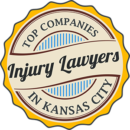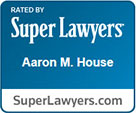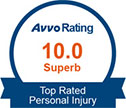Many car crashes are caused by motorists who are speeding or going too fast for the current road conditions. This might involve going only a few miles an hour over the posted speed limit, or it can involve going much faster. The National Highway Traffic Safety Administration reported that in 2017, speeding was a contributing factor in 26% of all fatalities. While every car crash is different, a driver who was speeding at the time of the crash will likely be deemed responsible for the accident. Still, accident victims are often uncertain about how to establish that the other driver was speeding.
There are Different Types of Speeding
Speeding is divided into two categories — exceeding the speed limit and driving too fast for the conditions. Both categories can occur together or separately. Many people think of speeding as going above the speed limit, but in reality, a driver can be traveling either at or below the speed limit and still be speeding. Weather plays a critical role in deciding whether a driver is traveling too fast for conditions. Construction zones can also create conditions in which speeding poses a risk of serious accidents.
How to Respond After a Crash Caused by Speeding
Staying calm after a crash is much easier said than done. All parties must remain at the scene of an accident. As soon as it is safe to do so and the risk of ending up in a multiple-vehicle crash has diminished, all parties should remain at the scene. After the vehicles are moved, call 911. This way law enforcement can write a report about how the crash occurred, and medical workers can assess anyone who is injured. Even if your injuries are not immediately apparent, it is a good idea to receive a medical evaluation so a report can be written about your injuries in case they later become noticeable.
What Evidence Can be Used to Establish the Other Driver Was Speeding?
One of the most common questions that the victims of accidents caused by speeding have is what evidence can be utilized to establish that the other driver was speeding. Some types of evidence that are commonly used include:
- Dash cameras. In 2018, USA Today reported that dash cam sales in the United States were rising sharply. One of the reasons that motorists place dashcams in their vehicles is to help assess the speed of other vehicles when crashes occur and to document how those crashes occur.
- Police reports. When law enforcement arrives at the scene of the accident, they will question both drivers about how the crash occurred. Law enforcement will also assess the scene to find out if any traffic citations were issued and might write whether they believe one of the motorists was speeding.
- Witness statements. While witnesses cannot assess how fast a vehicle is traveling, a motorist might sometimes be able to determine if a vehicle was traveling faster than other cars and trucks on the road. Witness testimony, however, can be particularly valuable in crashes when a vehicle was going well past the speed limit.
- Event Data Recorder (a/k/a “automotive black box”). Event data recorders track your vehicle’s data both before during an accident. This includes data like speed, acceleration, braking, steering and air-bag deployment. It is important to obtain the data as soon as possible after an accident in order to make sure it is preserved and not deleted or lost. Many vehicles involved in accidents are soon sold at auction by the insurance company, and once the vehicle has been disposed of or sold, that data may no longer be obtainable.
Speak with a Missouri Car Accident Lawyer Today
If you or a loved one was injured as a result of a driver’s speeding, you should not hesitate to speak with an attorney at House Law LLC. Our lawyers appreciate that speeding-related crashes can result in substantial medical costs as well as extensive property damage. Contact our law office today to schedule a free case evaluation.
Tags: auto accident, car accident, personal injury
Related Posts: Missouri & Kansas Weather-Related Car Crashes Understanding Liability After Vehicular Crashes Caused by the Rain Driving Safely in Construction Zones




